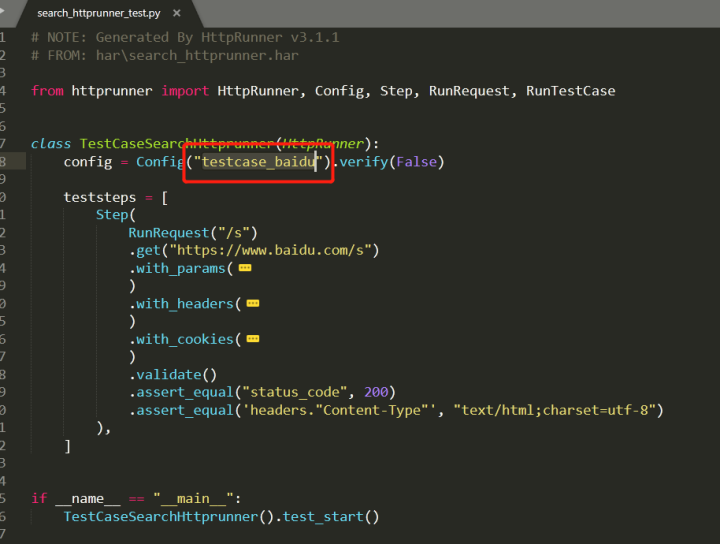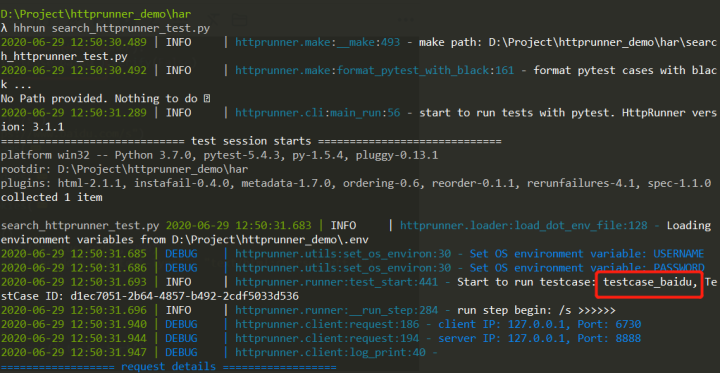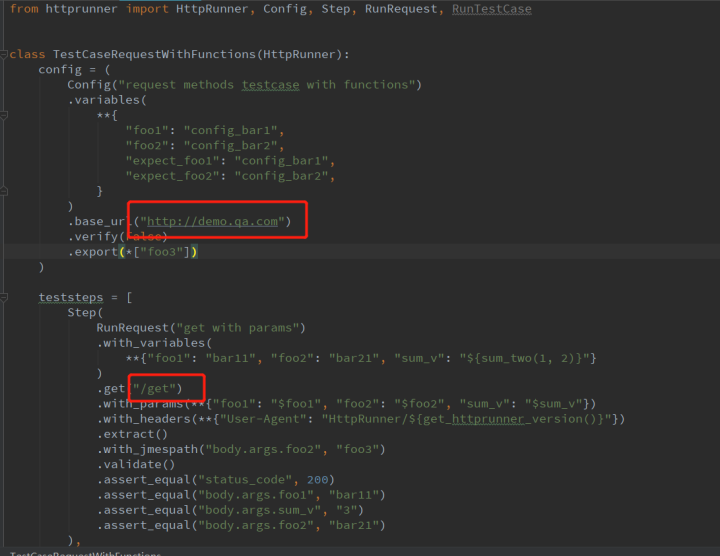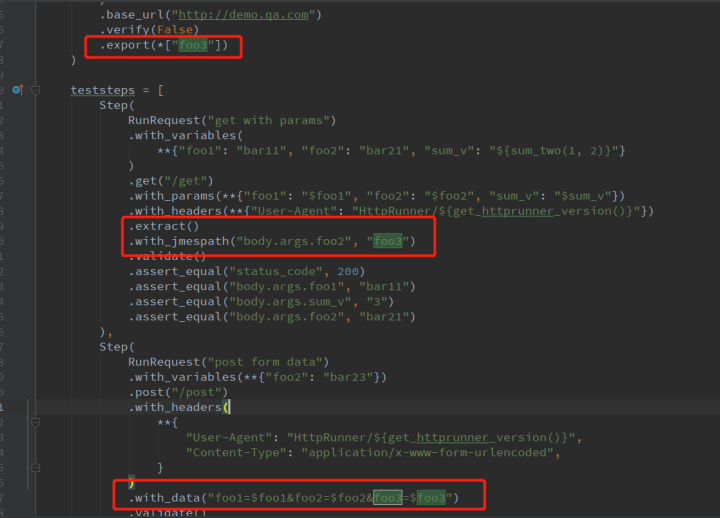【HttpRunner v3.x】笔记 ——5. 测试用例-config
上一篇中,我们了解到了config,在配置中,我们可以配置测试用例级级别的一些设置,比如基础url、验证、变量、导出。
我们一起来看,官方给出的一个例子:
from httprunner import HttpRunner, Config, Step, RunRequest, RunTestCase
class TestCaseRequestWithFunctions(HttpRunner):
config = (
Config("request methods testcase with functions")
.variables(
**{
"foo1": "config_bar1",
"foo2": "config_bar2",
"expect_foo1": "config_bar1",
"expect_foo2": "config_bar2",
}
)
.base_url("http://demo.qa.com")
.verify(False)
.export(*["foo3"])
)
teststeps = [
Step(
RunRequest("get with params")
.with_variables(
**{"foo1": "bar11", "foo2": "bar21", "sum_v": "${sum_two(1, 2)}"}
)
.get("/get")
.with_params(**{"foo1": "$foo1", "foo2": "$foo2", "sum_v": "$sum_v"})
.with_headers(**{"User-Agent": "HttpRunner/${get_httprunner_version()}"})
.extract()
.with_jmespath("body.args.foo2", "foo3")
.validate()
.assert_equal("status_code", 200)
.assert_equal("body.args.foo1", "bar11")
.assert_equal("body.args.sum_v", "3")
.assert_equal("body.args.foo2", "bar21")
),
Step(
RunRequest("post form data")
.with_variables(**{"foo2": "bar23"})
.post("/post")
.with_headers(
**{
"User-Agent": "HttpRunner/${get_httprunner_version()}",
"Content-Type": "application/x-www-form-urlencoded",
}
)
.with_data("foo1=$foo1&foo2=$foo2&foo3=$foo3")
.validate()
.assert_equal("status_code", 200)
.assert_equal("body.form.foo1", "$expect_foo1")
.assert_equal("body.form.foo2", "bar23")
.assert_equal("body.form.foo3", "bar21")
),
]
if __name__ == "__main__":
TestCaseRequestWithFunctions().test_start()
一、name(必填)
即用例名称,这是一个必填参数。测试用例名称,将显示在执行日志和测试报告中。比如,我在之前的百度搜索的case里,加入name。

运行后,在debug日志里,可以看的用例名称被展示出来。

二、base_url(选填)
其实这个配置一般在多环境切换中最常用。
比如你的这套测试用例在qa环境,uat环境都要使用,那么就可以把基础地址(举例http://demo.qa.com),设置进去。在后面的teststep中,只需要填上接口的相对路径就好了(举例 /get)。
这样的话,切换环境运行,只需要修改base_url即可。

三、variables(选填)
变量,这里可以存放一些公共的变量,可以在测试用例里引用。这里大家可以记住这个“公共”的词眼,因为在后面的Step中,还会有步骤变量。
比如说,我的接口有个传参是不变的,比如用户名username,而且后面的没个Step都会用到这个传参,那么username就可以放在config的公共变量里。
另外,Step里的变量优先级是比config里的变量要高的,如果有2个同名的变量的话,那么引用的时候,是优先引用步骤里的变量的。
四、verify(选填)
用来决定是否验证服务器TLS证书的开关。
通常设置为False,当请求https请求时,就会跳过验证。如果你运行时候发现抛错SSLError,可以检查一下是不是verify没传,或者设置了True。
五、export(选填)
导出的变量,主要是用于Step之间参数的传递。还是以上面的官方代码为例:

- 在config中配置export“foo3”这个变量。
- 在第一个Step中,.extract() 提取了"body.args.foo2"给变量“foo3”。
- 在第二个Step中,引用变量"foo3"。
像参数传递,提取这些点,会放在后面单独讲解,前面还是以熟悉框架为主。






【推荐】国内首个AI IDE,深度理解中文开发场景,立即下载体验Trae
【推荐】编程新体验,更懂你的AI,立即体验豆包MarsCode编程助手
【推荐】抖音旗下AI助手豆包,你的智能百科全书,全免费不限次数
【推荐】轻量又高性能的 SSH 工具 IShell:AI 加持,快人一步
· 开发者必知的日志记录最佳实践
· SQL Server 2025 AI相关能力初探
· Linux系列:如何用 C#调用 C方法造成内存泄露
· AI与.NET技术实操系列(二):开始使用ML.NET
· 记一次.NET内存居高不下排查解决与启示
· 开源Multi-agent AI智能体框架aevatar.ai,欢迎大家贡献代码
· Manus重磅发布:全球首款通用AI代理技术深度解析与实战指南
· 被坑几百块钱后,我竟然真的恢复了删除的微信聊天记录!
· 没有Manus邀请码?试试免邀请码的MGX或者开源的OpenManus吧
· 园子的第一款AI主题卫衣上架——"HELLO! HOW CAN I ASSIST YOU TODAY